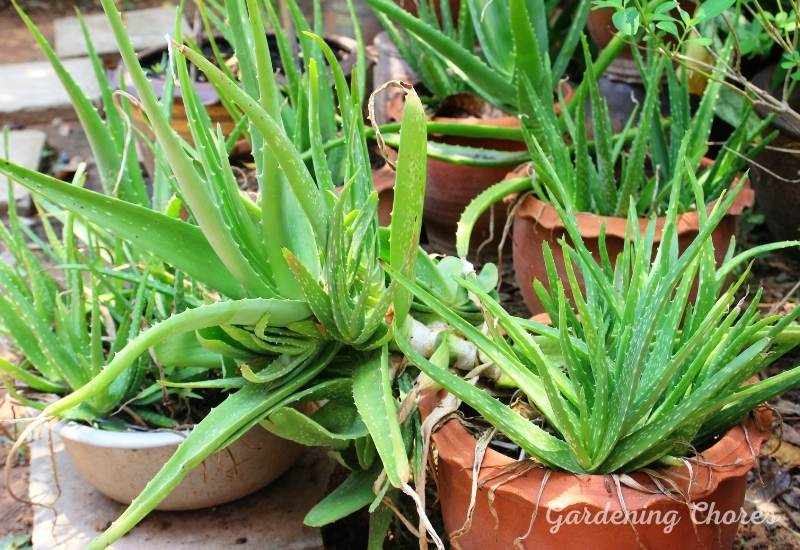
Aloe Vera is a succulent plant known for its many wonderful uses. It is best known to relieve sunburn and assist in the fast healing of wounds. But other than that, aloe vera is also said to alleviate heartburns, keep vegetables and fruits fresh, and lower blood sugar levels.
Added to that, it’s a great part of the skincare routine. No wonder that people like keeping this plant in their homes or backyard.
For someone who wants to start planting their own Aloe Vera Plant, you might be wondering, how fast does Aloe Vera grow?
Aloe Vera plants grown indoors usually take 3-4 years to grow into a mature plant, but if grown outdoors, it’s a lot faster. However, it’s best to take note that this is not the type of plant that will surprise you with a new leaf overnight because it will take months.
If you think that 3-4 years is too long, well, you might find it comforting to know that Aloe Vera is one of the fastest-growing succulent species.
And, if you don’t want to wait that long, there are ways that you can do to make your Aloe Vera plant grow faster.
I’ve also included below some growth conditions that you might need to consider when taking care of an Aloe Vera plant and few.
How can I make my Aloe Vera grow faster?
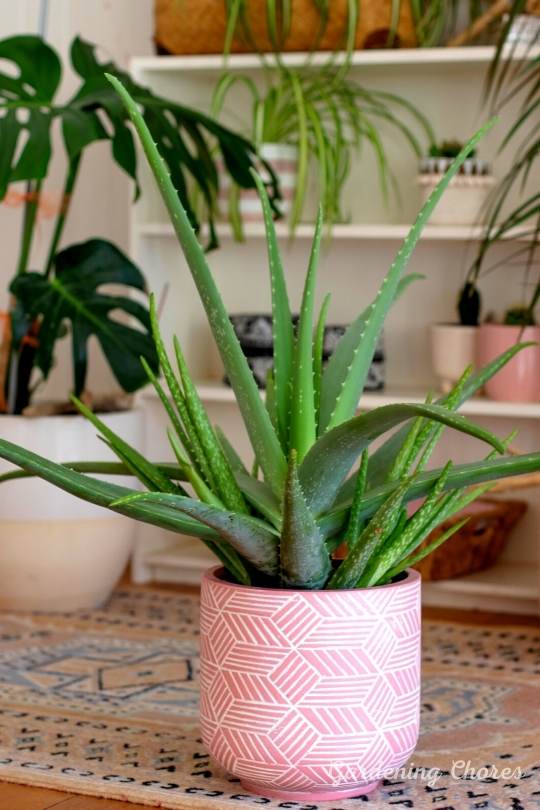
Having plants in your home can be very exciting, especially if you’ll be the one doing all the necessary stuff for them to grow healthy.
However, it may take a lot of patience to observe your plant growing, especially if it’s succulents which takes a long time to grow. So, is there any way to make it grow faster?
The growth rate of Aloe Vera plants usually depends on their environmental conditions. If the right environmental conditions are met, your aloe plant can grow faster.
If you want them to grow as quickly as they are able to grow, simply provide what they need as best you can.
So, how do you do this?
Here are the 7 Tips To Make An Aloe Vera Plant Grow Faster
1: Select A Bigger Container With Drainage Hole
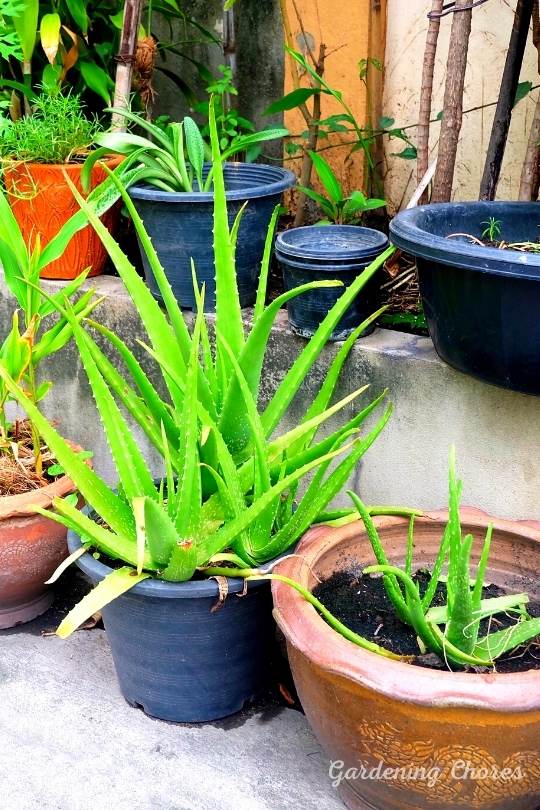
The first thing you should take a look at is the pot. It should not be more than a half-inch larger than the root ball of the plant. Added to that, it’s best if you only re-pot if the soil is already full of roots.
Getting a large pot, bigger than what your Aloe Vera currently needs, will not make the plant bigger. In fact, this can even cause death.
Because a larger pot means more soil, and therefore, more moisture than your Aloe Vera can handle (Aloe Vera’s are super sensitive to excess moisture).
So, make sure that you only have a pot enough for your Aloe Vera, and just do some re-potting if it almost starts to outgrow the current pot it’s in.
2: Plant Your Aloe Plant In Well-Draining Potting Mix
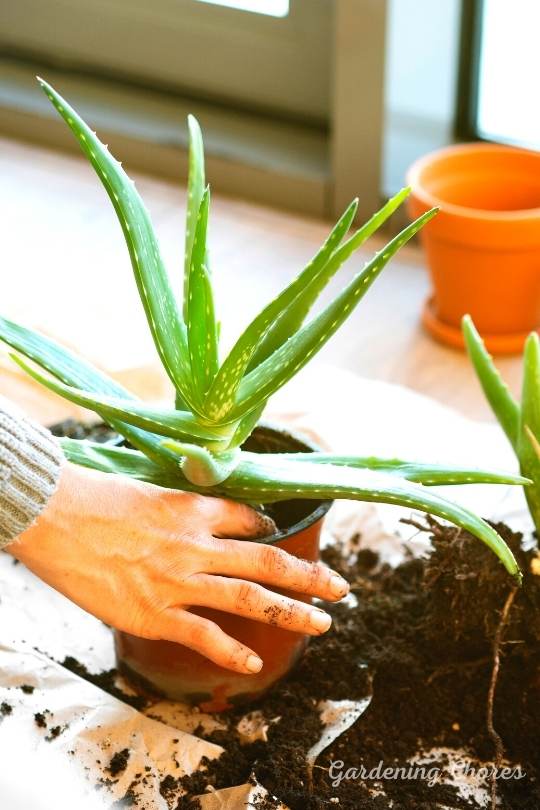
The soil must have excellent drainage. Always take note that Aloe Vera cannot stand excess moisture, so water needs to drip away from your soil.
The most recommended mix for an Aloe Vera soil is ⅓ perlite, ⅓ coarse sand, and ⅓ quality potting soil. Or you could also mix 50% very coarse sand and 50% quality potting mix.
It will also help if your container is a clay pot with holes in the bottom to let the plant breathe and allow the roots to grow better.
3: Water Aloe Vera Plants Deeply, But Infrequently
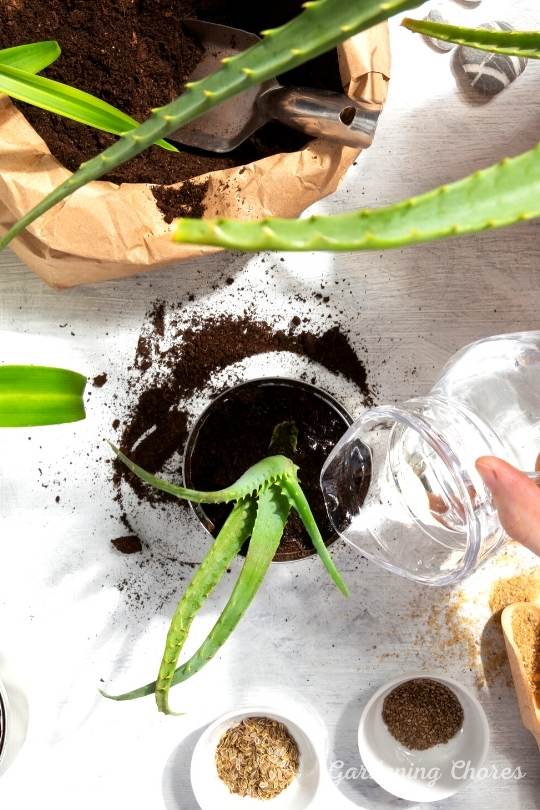
Be careful not to overwater your Aloe Vera. They are made to survive in nutrient-poor and arid soils, so overfeeding them will likely cause harm, or worse, death.
If you’re watering your Aloe Vera plant, simply wait until the water runs free at the bottom of the pot and then stop.
If you plan to water them again, make sure to check the soil first. If the soil mix feels dry at least one inch below the surface, then it’s time to get the plant hydrated again.
4: Fertilize Your Aloe Plant In The Spring And Summer
If you would like to use a fertilizer, liquid-type is the best option for aloe vera plants. But, only use this every couple of months.
Unlike other plants, overfeeding an Aloe Vera with fertilizer can burn the roots and slow down its growth.
5: Place Aloe Plants Near In A Bright Location
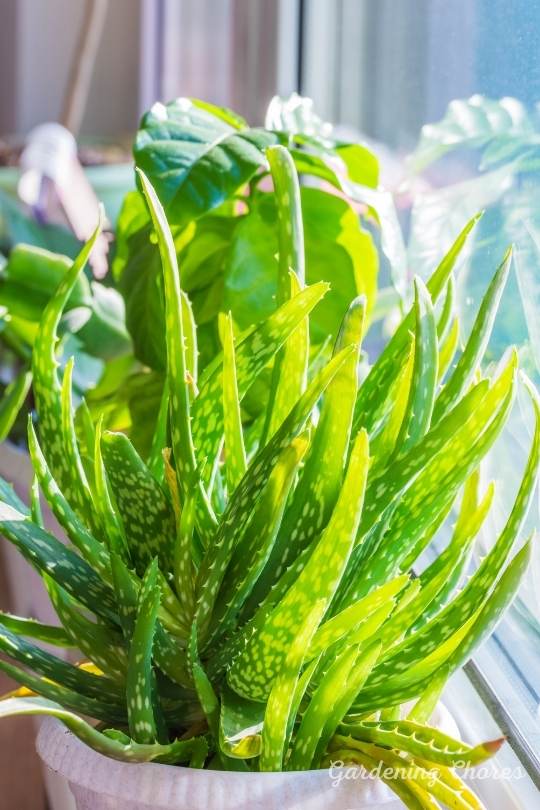
Aloe Vera needs light, and if you’re growing it indoors, you can put up artificial lights above them. About 6500-6700K Daylight fluorescent tubes are excellent.
Just keep it as close to the plant as possible for about 16 hours a day.
If you don’t have artificial light, natural lights will do great too. You can place the plant very close to the window where the daylight sun is, and you’re good to go.
Don’t put them in direct sunlight without any relative shade, as this can cause them sunburn.
6: Aloe Vera Do Best In Temperatures Between 55 And 80°F
Temperatures of 60 to 75 degrees Fahrenheit is optimal that you can set for Aloe Vera grown indoors. However, they can live in temperatures between 50 and 85 degrees Fahrenheit.
7: Banana Peel Liquid Fertilizer Will Helps Your Aloe Vera Plant To Grow Faster
Other than these growth conditions, you can also put in additional nutrients to the soil to support your Aloe Vera plant’s growth.
You can put in some eggshell or dried banana peel. This will help increase your plant’s strength in driving away pests and help them resist disease. It can also aid in sustaining efficient water and nutrients for your plant to absorb.
As you can see, Aloe Vera plants are not high maintenance plants. They don’t need a lot of watering nor a lot of nutrients. They only need enough, and that is where you have to be very careful.
But other than that, if you meet these growth conditions and make sure to stick with them, your Aloe Vera plants will surely grow healthy and a lot faster than usual.
Growing Indoors vs Outdoors: Which is faster?
Well, this will depend mostly on the area you are from. And like every other plant, Aloe plants will grow faster in their ideal habitats – the outdoors (given that the environment is warm).
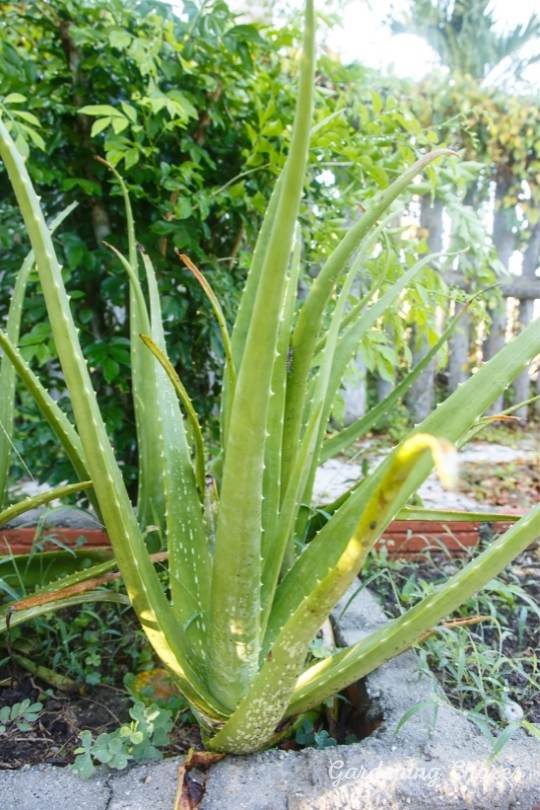
If you’re placing them outdoors, placing them under the full sun would be perfect. Make sure that your soil is sandy and well-drained. If not, and it takes too long for the ground to dry up when wet, then it’s best if you put your aloe vera in a pot rather than on the ground.
This is also an excellent idea for those in warm areas but has a lot of rainy seasons. This way, when it rains, you can quickly move the pot somewhere with a shade, so you don’t overwater your Aloe Vera plants.
For those in the colder regions, then Aloe Veras would be best placed indoors. Just make sure that ideal conditions are met – the right temperature, right lighting, right soil, and proper watering. If it’s winter, then you can skip watering and just let the plant rest from drinking.
If you get to experience sunny weather, take this as an opportunity to put the plant outside so they can get direct sunlight
How long does it take for Aloe Vera to grow from seed?
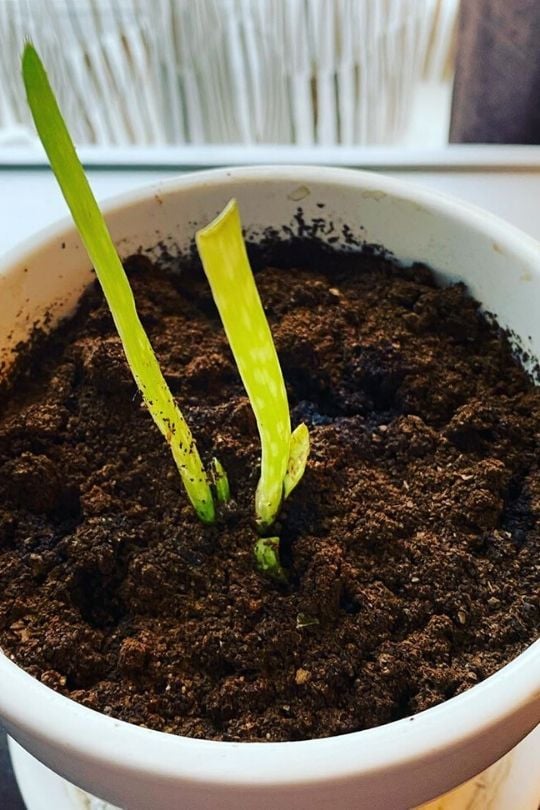
Several factors may influence your Aloe Vera seeds’ growth, including the time of the year and where you are. Naturally, if ideal conditions are met, it will only take about 2-4 weeks. You might find this hard to believe, considering that it takes years for an Aloe Vera plant to mature.
Well, it’s excellent news that Aloe Vera seeds sprout quickly as long as it’s planted by meeting all its growing conditions, which is almost the same on how you should care for a growing Aloe Vera plant.
So how do you grow an Aloe Vera seed properly? Well, the first thing you should do is make sure that the container is big enough and uses less soil to create a controlled environment for the seedlings.
The soil you use should be well-drained. You can use a mixture of 50% feat and 50% horticultural sand, or you can mix sand, sterile compost, and perlite.
Dampen your soil and spread your seed across your container (about an inch apart) and cover them with light sand.
When growing the Aloe Vera seeds, make sure that the ideal temperatures are met – which is at 75 degrees Fahrenheit. If you’re living in a warm climate area, then growing seed outdoors may be typical.
And for those living in colder regions, you can use artificial light with some bottom heat to support your seed’s growth.
Just like with growing Aloe Vera plants, seeds would need extra care too.
Some growers would place containers in plastic bags to keep humidity high. You can also mist the soil until seed sprouts start to form, which usually takes about 2-4 weeks. Just remember that it should stay on a heat source for two weeks to help develop its roots.
Once you’ve removed the heat mats, water the seedlings, but make sure that it’s only enough. Don’t drown them.
After you’ve observed growth of at least four or more leaves, you can start re-potting them into bigger pots to support their growing stage.
Just follow the same growth conditions as to how you would grow and take care of an adult Aloe Vera plant.
Why is my Aloe Vera not growing?
If your Aloe Vera is not growing the way you want it to be, you should start asking yourself, “Have you met the required growth conditions?” If you think you are, try to divide that question into several questions:
In other words, if you think your Aloe Vera is not growing the way you want it to be, always think about the ideal growth conditions.
Is it the right temperature, the right amount of water, proper soil, correct lighting, etc.? By simply asking yourself these questions, you would be able to come up with the best solution.
For example, if the sunlight is the problem, then make sure to provide them enough sunlight. If you’re living in a place with a colder climate, then you can use some artificial lighting to light your plants at least 16 hours a day.
If water is the problem, then learn to control your plant watering and don’t overwater them. Make sure that you’re using a well-drained soil and a pot that comes with a drainage system.
If you’re planting them on the ground, make sure that the land is not too wet, and if it is, better to transfer them to a pot.
Just review what the ideal conditions are for an Aloe plant and look for solutions around that. If you think you’ve met all these conditions but you’re Aloe Vera is still not growing, ask yourself: Was the plant stressed when you bought it?
If it is, then you’ve bought yourself a problem.
Remember, if you’re buying plants, make sure to check the environment they were grown into. If you’re buying from a shop, check if they are following the ideal conditions needed by the plant. If not, then skip them.
Always choose a healthy plant, so you won’t have a lot of problems once you return home.
Conclusion
Aloe Vera plants are beautiful, but they also offer many advantages for a person. This makes them excellent houseplants for anyone who would like to enjoy their benefits quickly.
You can easily grow them in your backyard or inside your homes. And although it takes 3-4 years for them to fully mature, this is worth it.
Besides, it doesn’t mean you’d have to wait that long. If you’re able to meet the ideal conditions needed by the plant, they can grow faster.
It is also more advantageous for those living in warmer areas as it is more suitable for the Aloe Vera plant’s growth.
Added to that, the leaves of the Aloe Vera already contain the gel-like substance even if it hasn’t still reached maturity. This means that you can enjoy its benefits also if it’s not one year yet.

Written By
Amber Noyes
Amber Noyes was born and raised in a suburban California town, San Mateo. She holds a master’s degree in horticulture from the University of California as well as a BS in Biology from the University of San Francisco. With experience working on an organic farm, water conservation research, farmers’ markets, and plant nursery, she understands what makes plants thrive and how we can better understand the connection between microclimate and plant health. When she’s not on the land, Amber loves informing people of new ideas/things related to gardening, especially organic gardening, houseplants, and growing plants in a small space.

This is very helpful content .
Thanks Amber Noyes to share this content.
My Aloe Vera plant has gotten so big that the leaves are so thick and heavy, they look like they’re going to break off. Any suggestions?
You can repot your plant in a bigger pot.
My aloe vera plant has grown big in 2 years but not producing any pups. What could be the reason ?
The aloe vera plant may not be mature enough to produce pups, or there may be issues with sunlight, soil, watering, or fertilizer. It could also be that the plant is not genetically predisposed to producing pups. It may just take time for the plant to produce pups.